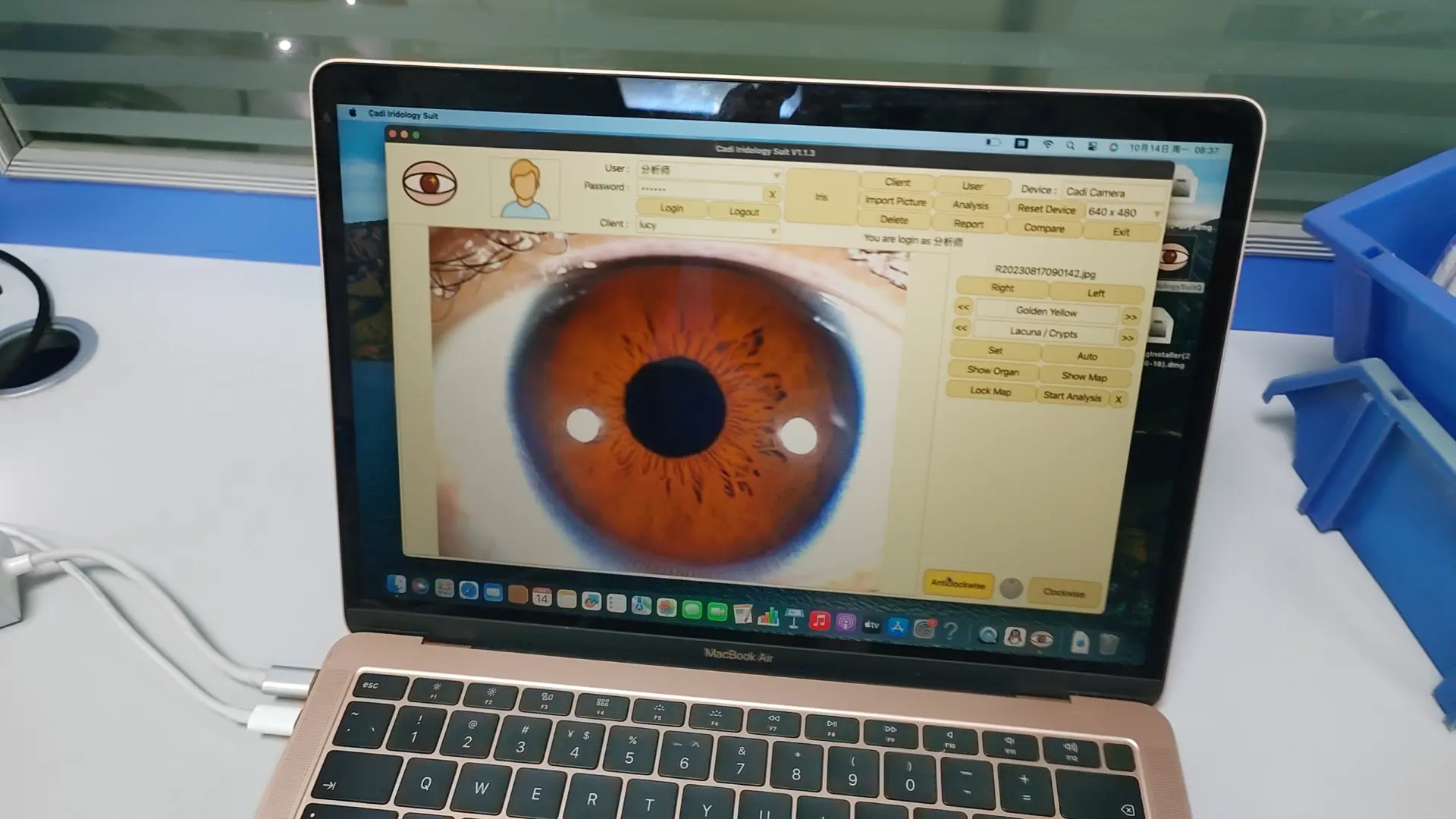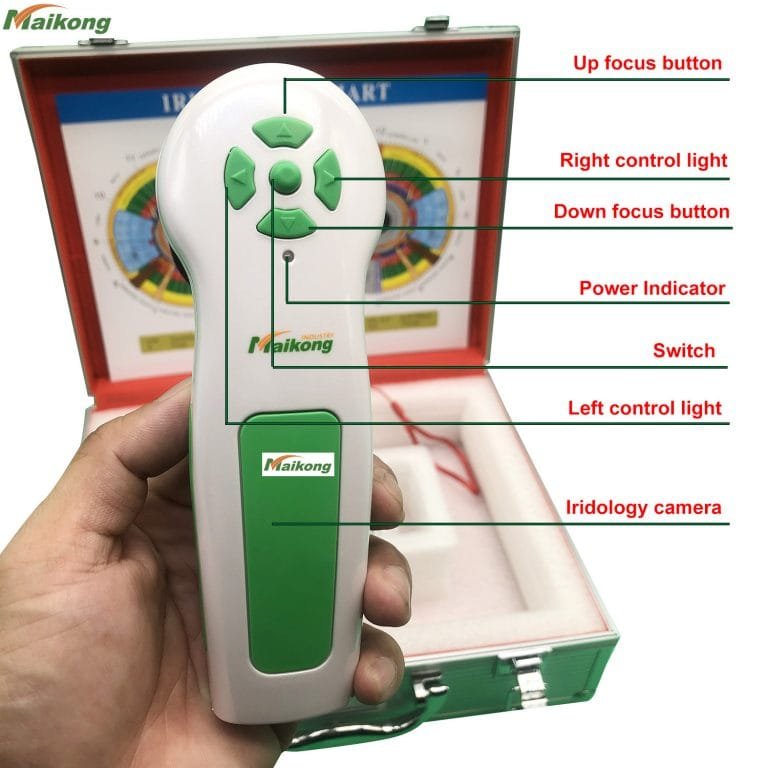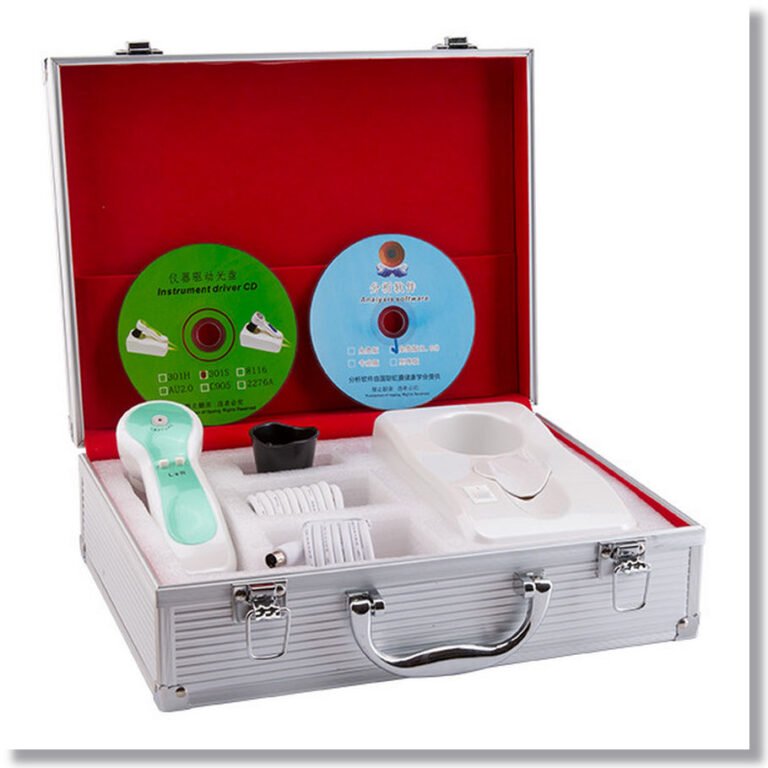
Das Studium der Augen: Was ist Iridologie?
Das Studium der Augen: Was ist Iridologie?
Die Iridologie wird auch allgemein als iridologische Analyse bezeichnet, die auch fälschlicherweise als IRIS -Diagnose oder iridologische Diagnose bezeichnet wird, ist die Untersuchung der Iris des menschlichen Auges.
Eine formalere Beschreibung, wie der weltbekannte amerikanische Iridologe Ellen Tart-Jensen angegeben ist: „Iridologie ist die Untersuchung der Farbe, Pigmentationen und Struktur der Iris oder des farbigen Teils des Auges, da sie sich genetisch durch Reflexreaktion auf die Stärken beziehen und Mängel des Körpers.
Darüber hinaus beobachten viele Iridologen die Grenze des Schülers sowie die Gefäßmarkierungen in der Sklera, um ihnen zu helfen, mehr über die allgemeine Gesundheit der Person zu verstehen.
Jede Iris ist völlig einzigartig. Es vermittelt den genetischen Blaupause für den Körper einer Person. Menschen können oft erbte physische Schwächen erwerben, die möglicherweise frühere Familienmitglieder betroffen haben. Diese können durch Iridologie festgestellt werden. Durch die IRIS -Analyse kann der Iridologe möglicherweise den Gesundheitszustand einer Person bestimmen. Die Iridologie kann viele Dinge offenbaren, vielleicht vor allem die Möglichkeit von Entzündungen und Reizungen in den verschiedenen Körperteilen. In diesem Sinne ist Iridologie ein nützliches analytisches Instrument.
Die meisten modernen Iridologen verwenden eine iridologische Kamera, um Fotos von links und rechts Iris zu fotografieren. Sobald sie hochauflösende Standbilder der Iris erhalten haben, verwenden sie dann eine iridologische Karte oder ein iriktologisches Diagramm, um ihre iridologische Analyse zu beginnen. Der Iridologe kann auch iridologische Software verwenden, um die Iridologieanalyse zu unterstützen.
Die Iridologie ergänzt alle Gesundheitswissenschaften, da sie Informationen liefert, nicht nur darüber, was Sie möglicherweise kranken, sondern auch über die Grundursache der Störung.
Die Iridologie ist ein sicheres, nicht-invasives Analysewerkzeug, das sowohl in orthodoxe als auch in Komplementärmedizin integriert werden kann.
Die Iridologie hilft den Menschen, ihre genetischen Stärken und Schwächen kennenzulernen und sich bewusst zu werden, was sie tun können, um sich selbst zu helfen.
Iridologist, believe that iridology is one of the best assessment tools available to discover which areas of the body are genetically strong and which are deficient. Iridology can analyze the overall health according to specific iris colors and m

Iridologiegeschichte
Iridologiegeschichte
Iridology research began in 1670 when Dr. Philippus Meyens published a paper describing the eyes of his patients when they became sick or injured. He also noticed changes in the eye that came with healing and was able to link points on the iris to specific parts of the body. By observing the eye, he was eventually able to identify areas in the body in need of support which would show up in the eye long before physical symptoms would manifest.While eyes have been a focus in civilizations throughout the ages, “modern” Iridology got its start just over 100 years ago. In the late 1800’s, a physician from Hungary and another from Sweden began observing eyes and organizing their findings. This process of observation and correlating has been slow, but it established a foundation for others to build on.
The first book on Iridology in America, by an emigrated Austrian physician, was printed in 1904. This was followed by the works of N.D.s and other naturopathic oriented M.D.s.Working with limited magnification and photography equipment, progress was difficult. Then with the emergence of the AMA and other political and economic influences and the advent of “Wunder” drugs, almost all natural medicine practices declined in this country. Dr. Bernard Jensen is credited with keeping Iridology alive in North America.In Europe, a different political and economic climate created an environment that has allowed Iridology (and other natural medicine practices) to evolve. Extensive research has been carried out in Europe and iridology is now widely accepted as a valuable preventative health care approach. Currently in the U.S. more people are showing interest in iridology as an alternative method for improving health. Now you can experience the benefits of this remarkable assessment tool/technique.

Iridologische Schlussfolgerung
Iridologische Schlussfolgerung
Die Iridologie ist eine sichere, nicht interventionäre diagnostische Technik, die keine Nadeln und keine Anästhesie oder Medikamente erfordert. Es kann jedoch einen wertvollen Leitfaden für Gesundheit und Krankheit bieten. Wenn jede Arztoperation einen ausgebildeten Iridologen und Diagnostiker einsetzte, oder besser, wenn jeder Arzt eine Iridologie untersuchte, würden viele explorative Operationen vermieden. Dies würde nicht nur finanzielle Einnahmen, sondern auch Zeit und Leiden seitens des Patienten sparen.
Die Iridologie ist neben anderen Naturwissenschaften wahrscheinlich ihrer Zeit in den Vereinigten Staaten voraus. Es braucht einen besonderen und futuristischen Praktiker, um Iridologie zu ihrem vollen Vorteil einzusetzen. Mit der Zeit wird sich die Iridologie als Mainstream-Diagnosetechnik in das 21. Jahrhundert etablieren.

A basic guide to iridology diagnosis in Sydney
A basic guide to iridology diagnosis in Sydney
Iridology is often used by naturopaths to help determine the state of their client’s health. There are different tools that naturopaths employ to analyse the iris, which is the coloured doughnut-shaped tissue of the eye, such as an iris camera or a torch and magnifying glass.
While iridology doesn’t enable naturopaths to diagnose diseases, the iris can be used to identify if a range of different body systems aren’t functioning correctly or are over stressed. There are also various iris signs that can signify if specific health problems are evident.
Sign 1: Cholesterol ring
Otherwise referred to as arcus senilis, the cholesterol ring is a frosted white circle which appears in the outer perimeter of the iris. If an individual has a cholesterol ring this often highlights they have high cholesterol levels or genetically have a higher risk of developing heart disease. Health advice for this condition includes regular exercise, weight loss and taking fish oils.
Sign 2: Nerve rings
Nerve rings are identified as concentric arcs which can be seen anywhere on the iris. These signify if an individual carries stress in their body. The higher the number of nerve rings an individual has, the more stress they are carrying. Epsom salt baths, kava, passion flower, yoga and meditation can help to calm a nervous system that is overactive.
Sign 3: Lymphatic rosary
Identified as a series of small white or cream beads that appear on the outer iris perimeter, a lymphatic rosary often highlights a sluggish lymphatic system. It also reveals that the immune system could need assistance with garlic and vitamin C, as well as echinacea and zinc.
Sign 4: Pulsating pupil
When a pupil can be seen pulsating in and out or is larger than it’s normal size, this is often an indicator that you could be adrenally exhausted and may be suffering from fatigue. If you take vitamin B, along with herbs related to the adrenals, such as rehmannia or liquorice, this can help you to sleep better.
Sign 5: Fine red blood vessels
If fine red blood vessels can be seen in the whites of the eyes surrounding the iris, this is a sign that the individual may suffer from allergies. To treat this it’s important to identify and remove the allergen.
Iridology Sydney
If you’re interested in having a naturopath perform this service, contact Express Healing Sydney iridology today. Our Sydney iridologist Ale’ has many years’ experience in iris diagnosis.

What is Comprehensive Iridology?
What is Comprehensive Iridology?
Comprehensive IridologyTM, was developed, and is accredited, by the International Iridology Practitioners Association. This is a combination of the American and European models of iridology, and it contains the latest up-to-date information on the theory and practice of iridology that is based on current extensive research.





































